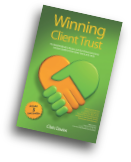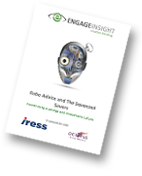One of the key questions we get asked in the first stages of client engagement is “How can we ensure our clients and staff remain engaged once the consultancy has finished?”
Sustainable change can sometimes be an oxymoron, how often has a consultancy engagement finished and the same old behaviours and results begin to surface?
One of the most effective strategies to ensure this does not happen and strategic or behavioural change sticks is through journey mapping. This can be externally for customers or clients or internally for the board and employees.
There are some key issues to consider when deciding on journey mapping benefits:
- Get executive buy-in: Focus on the fact that journey mapping can truly place the business in clients or employee shoes. For example organisational buy in for customer centricity is essential.
- Gain insight into client interactions (touch points) with your business
- Focus the business around one common issue –the client needs and suitable products and services will follow
- Emphasise the team: front and back office tasks and skills are both essential to client centricity and employee engagement
- Tied into point 4 is also ensuring the right people are in the right position with the right skills
- Providing a holistic view to the business to showcase how different departments interact internally and externally i.e. moving outside silo’s
- Identify performance measurement opportunities and customer ‘moments of truth
- Gain clarity of what strategies or rules are working and which are not
- Improve the client or employee experience
Within financial services, there has never been a better time to measure, manage and improve the client or employee engagement. Take the new pension rules, if product and services are built around pension investors needs and requirements in the accumulation and de-accumulation stages (which are very different), then clients will be far more confident and trusting in an industry that has been grappling with regaining client confidence since the financial crises.
Journey mapping helps gain high relationship capital with clients or staff and thus provides a great foundation to build loyalty and trust, both of which provide the ‘glue’ for sustainable change.













